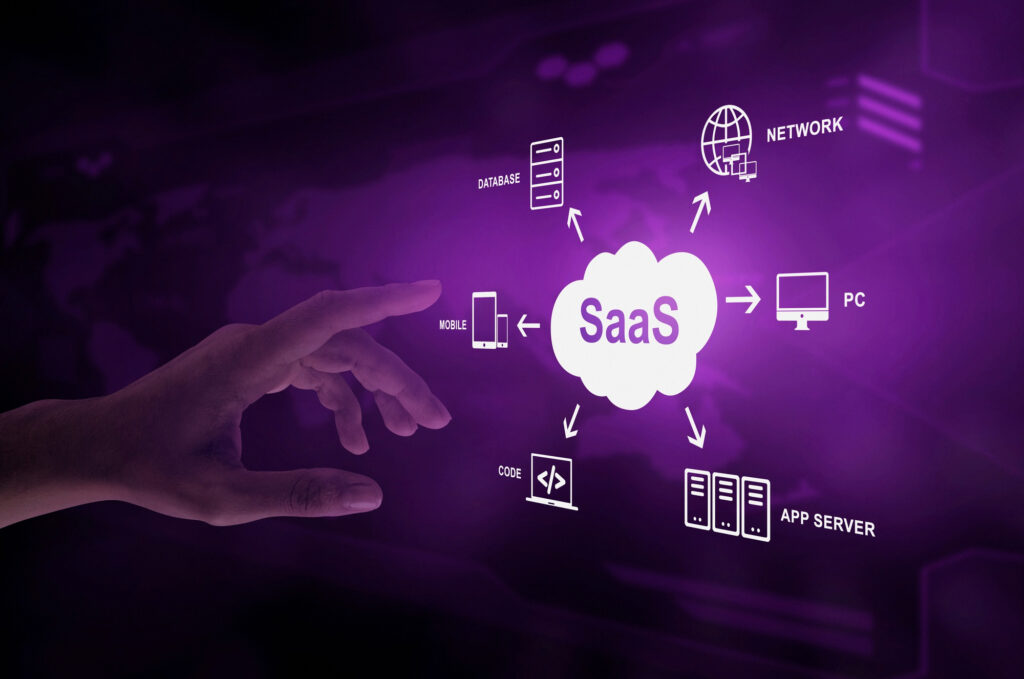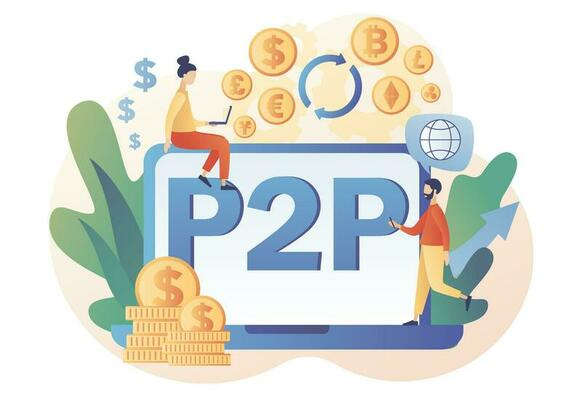The previous two years proved to be a great boom era for the Software as a Service (SaaS) industry. During this period, numerous new SaaS startups emerged, and several even ascended to unicorn status. And the remarkable surge wasn’t limited to just giants like Zoom, which witnessed a nearly 600% revenue boost.
The concept of this growing new business model might have ignited your entrepreneurial spirit, pushing you towards the idea of launching your own SaaS venture. Perhaps you’re even planning on crafting a comprehensive business plan.
The next step is gaining a thorough understanding of the SaaS business model, how it works, and the nitty-gritty of its metrics. And that’s exactly what we’re going to cover in this comprehensive guide.

What is a SaaS Business Model?
So, what exactly is a SaaS Business Model? Think of it as the master plan, the roadmap that guides a SaaS business through the intricacies of online markets. It’s the blueprint that outlines how the business will survive and thrive. The core idea is simple yet powerful: we house our software in the cloud, accessible through a web browser, and in return, users pay a fee for access.
Operating a SaaS business online presents its own set of unique challenges compared to traditional hosting methods. This means a SaaS venture demands a blend of design finesse, coding wizardry, and a keen eye for the latest industry trends. It’s like being part artist, part tech wizard!
Having a robust SaaS business model in place acts as your shield against potential challenges, allowing you to flourish in the fiercely competitive world of SaaS.
How Does the SaaS Business Model Operate?
Recurring Payments
When it comes to SaaS, you’re not selling hardware – you’re also offering a subscription service for using the app. This means your focus shifts from one-time payments to regular, be it on a yearly or monthly basis.
This recurring income is often referred to as Monthly Recurring Revenue (MRR). Since a SaaS venture provides a service rather than a tangible product, accounting for revenue can be a bit of a puzzle.
While you might receive some upfront cash when a customer signs up, it’s not classified as revenue until you’ve delivered on your end. Until then, it’s considered a liability—money your customer can request back if the service isn’t provided. With that said, revenue recognition becomes a pivotal aspect of the SaaS business model.
Enhanced Customer Retention
I know it goes without saying, but customer retention is vital for all businesses, and in the world of SaaS revenue models, it takes on even greater significance. The lifeline of your business hinges on retaining paying customers.
As mentioned earlier, you can’t lay claim to the entire subscription fee until you’ve fulfilled the agreed term of service. If customers sign up for a year but leave after just two months, you’re left without the remaining ten months of recurring revenue.
This places immense emphasis on nurturing customer relationships and upselling. Existing SaaS customers tend to spend more on average than new ones, and they’re over seven times more likely to switch to a competitor due to poor customer service rather than a superior product.
Continuous Updates
Unlike other products that may go for major “next-gen” versions, SaaS opts for frequent, incremental enhancements to keep users satisfied and boost customer lifetime value.
This approach stems from the nature of the software industry.
Security is a top concern, with vulnerabilities potentially exposing customer data to cyber threats. Therefore, SaaS companies dedicate significant effort to ongoing security assessments.
Additionally, since they host their own products, they have the freedom to roll out updates whenever necessary, introducing new features, improving iterations of existing ones, and making fresh product enhancements. Combined with effective customer communication, this enables SaaS companies to be highly attuned to the needs and feedback of their customer base.

The Advantages of Embracing the SaaS Business Model
The SaaS business model boasts a multitude of benefits that can catapult new products into the market with remarkable speed. One of its standout features is the freedom it provides for experimentation, all thanks to its cloud-based foundation.
But that’s just the tip of the iceberg. Here are some more compelling reasons to dive into the world of SaaS entrepreneurship:
Flexible Accessibility of Value:
SaaS offers round-the-clock remote access, allowing you to deliver your services anytime and from anywhere. This flexibility benefits both providers and users. An application development company in Malaysia can even help you control the intensity of this flexibility.
Assured Business Success:
Equipped with a SaaS product, you’re armed to conquer the market by granting cloud access. The key lies in targeting the right customers and crafting a SaaS solution that addresses their specific pain points.
Mitigated Employee Turnover:
The SaaS enterprise model your app development service crafts ensures a steady stream of recurring revenue. Additionally, access to CRM dashboards provides valuable insights into a product’s market performance. By analyzing the performance of competitors’ products or services, you can formulate strategies to create the most compelling SaaS offering.
Minimal Technical Requirements:
All a user needs is a web connection to harness the power of a SaaS product. This simplicity enables service providers to market with a Minimum Viable Product (MVP) swiftly, granting customers effortless access, gathering feedback, and continuously enhancing the quality of services.
Navigating Success: Keep a Close Eye on These 6 Essential SaaS Metrics
For your company to flourish at the right pace, meticulous tracking of vital metrics is non-negotiable. Let’s delve into the main SaaS metrics that should be at the top of your monitoring list:
1. Customer Churn Rate:
The customer churn rate serves as a barometer, indicating how many customers slipped away during a specific period and gauging the efficiency of your business.
When scrutinizing churn rates, don’t merely skim through the numbers. Dive deeper into the persona of these departed customers. Understanding why they left is key to devising strategies for retention.
2. Revenue Rate:
Revenue churn steps onto the stage, highlighting the monetary aspect of customer departures in a given timeframe. This metric becomes particularly critical when certain customers contribute more to your revenue stream than others, potentially impacting your bottom line differently.
Our advice? Don’t rely solely on customer churn rate. Measure both customer churn and revenue rate to gain a comprehensive understanding and avoid surprises stemming from significant differences in the numbers.
Tracking these metrics with precision will let you steer your SaaS venture toward sustained growth and success.
3. Customer Lifetime Value (CLV):
Customer Lifetime Value (CLV) refers to the total revenue generated by a customer over their entire interaction with your brand. Calculate it by subtracting the cost of acquisition and maintenance from the product of customer revenue and their lifetime with your service.
The longer customers remain loyal, the higher their lifetime value—an invaluable perspective on their significance to your business.
4. Customer Acquisition Cost (CAC):
Customer Acquisition Cost (CAC) quantifies the amount a company invests in sales and marketing to secure new customers. Compute this metric by dividing the total sales and marketing spend by the number of new customers added during a specified period.
5. Months to Recover CAC:
This metric gauges the time it takes to generate sufficient revenue to offset the cost of acquiring a new customer. Calculate it as Customer Acquisition Cost divided by Monthly Recurring Revenue, multiplied by the gross margin (gross revenue minus the cost of sales). This measurement is taken when the customer starts yielding returns for your business.
6. Customer Engagement Score:
The Customer Engagement Score provides insights into how actively and meaningfully customers interact with your product. It covers factors such as login frequency, time spent on the platform, and other indicators of potential churn.
Consider the following inputs to track your customer engagement score:
- Product/Service Engagement: How frequently clients use your product or service.
- Marketing Engagement: Attendance at webinars and events related to your product.
- Community Engagement: Active participation in your community.
These metrics collectively act as a compass, guiding your SaaS venture toward strategic decisions and sustained success.
Wrapping up
As we conclude our SaaS journey, imagine stepping onto the tech stage with confidence. We’ve unraveled the intricacies of revenue models and metrics, transforming SaaS from a mere service to a symphony of innovation. Beyond just basic coding, it encompasses the art of leveraging a seamless user experience, where every interaction is a note in the melody of success.
So, as your business gears up for its SaaS transformation, consider this not as an ending but a prelude to tech greatness. And hey, if you need help getting started with your first SaaS business model integration, Segwitz is here to help.
We’re a highly reputed tech strategy partner for brands in Malaysia and across the globe. From basic consultation to end-to-end execution, we’ve got you covered.



